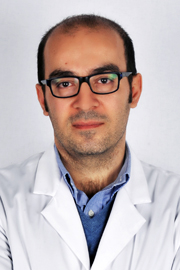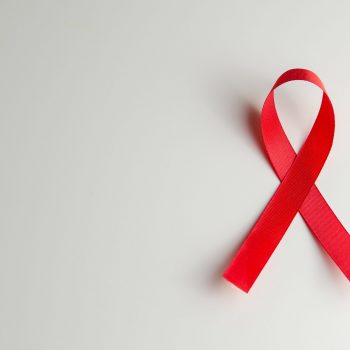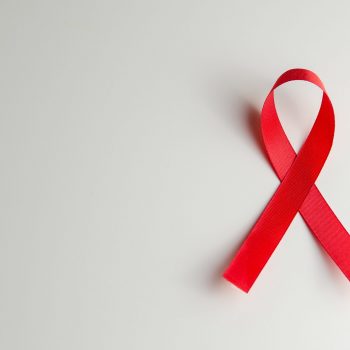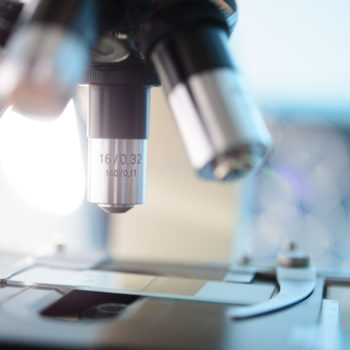The first case happened in Berlin twelve years ago. Last week, the victory over HIV took place in London over an HIV-positive patient with cancer. After a stem cell transplant with a specific genetic mutation, the man was negative for serological tests. The therapeutic success was achieved thanks to researchers from Imperial College London, in collaboration with colleagues from the Universities of Cambridge and Oxford. The study was presented at the Conference on Retroviruses and Opportunistic Infections, in Seattle, USA, where it will be published in the journal Nature. The experts warn, however, that we are not facing a cure for HIV. At least not yet, but another small and significant step forward has been taken. We commented on the news together with Professor Domenico Mavilio, immunologist at Humanitas and lecturer at the University of Milan.
The new case of London
For the second time, the HIV virus disappeared in an HIV-positive man with cancer treated in London, who was able to stop antiretroviral treatments without the virus recurring. The first case of recovery was 12 years ago. The credit goes to some researchers at Imperial College London, in collaboration with colleagues from the Universities of Cambridge and Oxford. The study was presented at the Conference on Retroviruses and Opportunistic Infections in Seattle, USA, and it will be published in the journal Nature.
Both patients involved in the two events were both HIV-positive and cancer patients and received a stem cell transplant from compatible and selected donors. In the recent case of London, the virus, contracted in 2003 and treated since 2012, has been in remission for 18 months, after the suspension of HIV therapies. However, the authors point out that there is still no cure and that the subject’s monitoring will continue.
Chemotherapy has also been effective against HIV because it has stopped the reproduction of infected cells. Transplantation may have been the key to preventing the return of HIV after the end of the chemotherapy, but in London the patient may have had some side effects, in particular the so-called “transplant disease against the host”, in which the cells of the donor’s immune system attack those of the recipient. A complication that, however, may have actually
The current challenge in third world countries
Since the early 1980s, AIDS has caused more than 35 million deaths. Today there are still 37 million people with HIV in the world. To combat this disease, which is still incurable today, science has available therapies that suppress the virus, keeping the symptoms at bay and greatly delaying the course of the disease. A challenge that is still being played out today, especially in developing countries, where the urgency to eliminate the disease altogether is stronger because of the high number of people who still get sick and especially because only 59% of them receive antiretroviral therapy that prevents the development of AIDS, an acronym for “acquired immune deficiency syndrome”, acquired immunodeficiency syndrome.
How HIV works
HIV has the ability to replicate itself by exploiting the white blood cells of the organism that has affected. It is estimated that 37 million people worldwide have HIV (human immunodeficiency virus), but only 59% of them receive antiretroviral therapy that prevents the development of AIDS or serious infections. Even today, about one million people still die each year from HIV-related causes.
The word of Humanitas
We asked Dr. Mavilio to answer some questions about the case.
After the London patient, we can say that the Berlin patient was not an abnormality?
“At this point we can certainly say that the “London patient” is an important confirmation and “replica”, if only in part the previous case of Berlin. Obviously, the relatively short time (about 18 months) of observation of the lack of viral replication (total disappearance of virus in the blood – ed) does not allow to declare the London patient cured. Also considering that no investigations were carried out or presented on the presence of the replicating or quiescent virus in organs and tissues, but only on the circulating compartment. Therefore, it is necessary to maintain a prudent attitude before considering the patient in question as “cured”. It is also important to say that, despite the many similarities between these two clinical cases, there are also significant differences between the two patients that could be relevant in order to extend this approach specifically to other selected cases of HIV-1 positive patients in which a stem cell transplant is an ethically sustainable therapeutic choice to counteract an opportunistic haematological neoplasm. In fact, the incidence of haematological neoplasms such as leukaemia and lymphomas are more frequent in infected HIV-1 patients than in seronegative individuals.
What are the hopes for treatment related to gene therapy? Is the therapy risky or can it not be applied to all patients?
“In principle, this case confirms that gene therapy can in fact recreate a condition that exists in nature, namely homozygous deletion in the CCR5 gene (CCR∆32). This mutation, although it is rare and most frequently found in some ethnic groups, is absolutely compatible with life and makes these people almost absolutely resistant to infection, without any other important and frequent clinical problems except in exceptional cases. It must be clear, however, that this approach cannot represent a therapeutic scheme applicable to all HIV-positive people, but can only be considered for those who have to undergo a bone marrow or stem cell transplant to counteract a neoplasm resistant to traditional therapy schemes. Moreover, since spontaneous CCR5 mutation is a very rare event in the population, it would be virtually impossible to find stem cell donors for all the millions of HIV-1 infected patients who would need this gene therapy. Furthermore, bone marrow transplantation is an invasive procedure, it has important side effects that heavily influence the quality and duration of life of transplanted patients, it requires a long convalescence period, it involves several clinical risks and a waste of great economic resources. While all scientists agree that it cannot be implemented on a large scale, at the same time they see in this confirmation of the “London patient” the basis for developing new technological solutions that use this same mechanism of care without proceeding to a real transplant.








